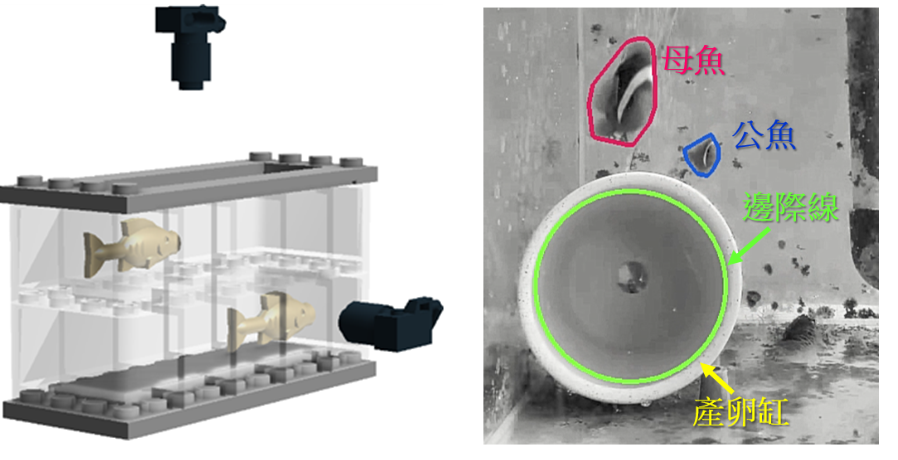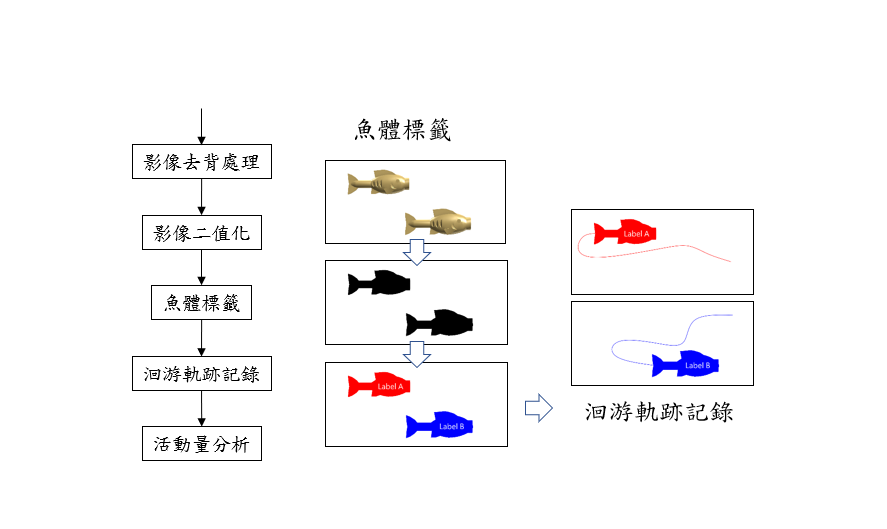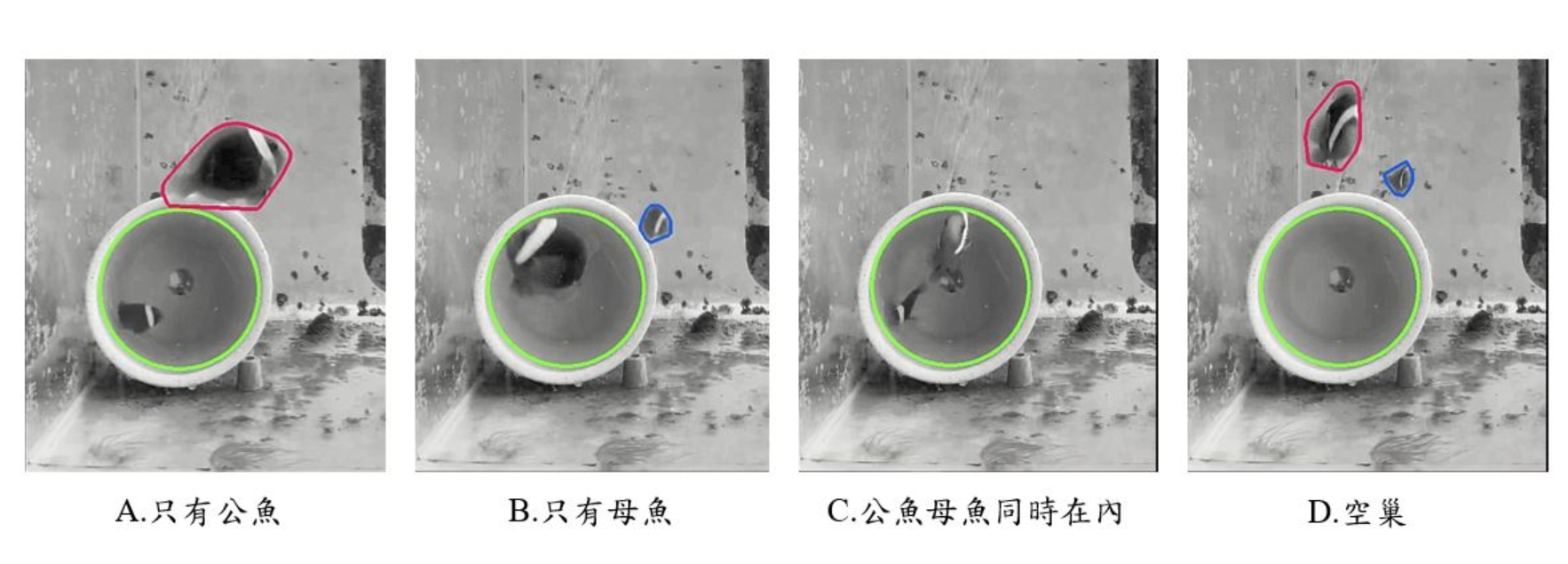Author:Cheng Ming-Chung, Fisheries Research Institute, Council of Agriculture, Executive Yuan
The ornamental aquarium is now the third largest pet market only next to those of dogs and cats, and has continued to grow steadily. Marine aquarium fishes are the popular species in the aquarium market with their beautiful postures and bright colors, and their special status in the ecosystem. Over fishing, however, has reduced their number in natural habitats and harmed the natural ecological balance so that artificial propagation is definitely the future trend considering the demand of the market. The aquaculture environment monitoring and smart image recognition modular facilities are capable of promoting the modular upgrading of cost-effective breeding environment, and to even help facilitate cross-domain industrial alliance and the integration of upstream and downstream industries.
At present, the development of aquatic animal behavior monitoring is mostly focused on economic fishes. Among freshwater aquarium fish, the zebrafish behavior development is the most noticeable. It is also studied for use in biotechnology, medical studies, and other precision animal behavior trajectory research. Behavioral images of anemonefish are recorded to study their social behavior patterns. The trajectory is recorded in 3D stereoscopic images to track and simulate the behavior experiments on the reproduction, interaction and preying behaviors for analysis, thereby facilitating the maintenance and management and forming of future breeding strategies.
The introduction is presented in three parts:
1. Image processing and recognition technology
The anemonefish broodfish behavior image recognition system uses the image processing and recognition technologies to develop the innovative experiment software and equipment which present anemonefish behavior patterns to help researchers to obtain accurate and reliable traceable data in a controlled experimental environment.
The behavioral images of the anemonefish broodfish are captured using recognition technologies (algorithms) through a dual lens high-end camera (from above and side of the fish tank). Analysis is made with the recognition algorithm, the fish movement trajectory algorithm and the fish body label algorithm, so the behavior track of anemonefish is accurately recorded. The system will thoroughly record and analyze the reproductive activities, so that the management conditions of the broodfish can be adjusted and managed based on management needs.
 Installation of camera for the aquarium broodfish behavior recognition and analysis equipment
Installation of camera for the aquarium broodfish behavior recognition and analysis equipment The process and functions of the aquarium broodfish behavior recognition and analysis
The process and functions of the aquarium broodfish behavior recognition and analysis 2. The development of AI image recognition system for the broodfish
In the effort to understand the behavior patterns of the broodfish and to record the reproductive behaviors through automatic image data collection, the behavior images of anemonefish broodfish are removed of the background images, binarized, and have the fish body labeled. Comparison is made with the previous images to record the fish migration trajectory, and the lingering time of the male and the female fish in the spawning ground, and also the behavioral changes in the pre-spawning, spawning and egg protection periods (Figure 3). A study is done with a pair of tomato clownfish (Amphiprion frenatus) on their reproductive behaviors, including those of swimming and spawning bed cleaning at the early stage of spawning, the number of times and the methods in which the female spawns and stays on guard during the reproductive process, the behavior patterns of the male after seminal emission, and the egg protection behaviors of the parent fish like purging the water with the pectoral fins and pecking away dead eggs. It is found that the closer to the hatching day, the higher frequency the male uses the pectoral and caudal fins to stir the flow, even in the low light conditions at night, until all the larvae are hatched. Through image recognition, data such as the time of spawning, the location of the fertilized eggs and the distribution of the amount of eggs per unit area can be recorded as the reference for later management and nursery considerations.
 Image recording of reproductive behavior of the anemonefish
Image recording of reproductive behavior of the anemonefish3. Water quality monitoring and systematic fish behavior
The technology involved in the fish behavior automatic recognition and the water quality warning system are integrated so that water quality can be immediately adjusted when any urgent behavior is observed of the parent fish.
The water quality monitoring equipment is installed at the location of the water circulating system and is integrated with the "Automatic Water Quality Improvement Monitoring and Control System for Marine Aquarium Fish", the "Emergency Oxygen Supply System" and the "Report System" into an oxygen supply regulation mechanism in a high-density aquaculture, which enables automated control of the aquaculture system. In case of low dissolved oxygen, the oxygenation device is automatically activated for the water circulating system of the broodfish to facilitate the high-density automated breeding test. Currently, there are over 80 pairs of broodfish in the breeding system. In this project, an anemonefish survival system is built with improved water intake and drainage facilities, and the cultivation system of the fish farm is turned into an aquaculture system capable of automatic water supply. Through the improvement of the marine aquarium fish breeding environment with the automated control system, the management efficiency of the fish farm is expected to be enhanced.
With the development of the broodfish behavior image recognition system and the integration of the water quality monitoring and sensing system, high-precision and low-cost sensing and networking functions are provided for the practical use in fish farms. The modular improvement of cost-effective fish farm environment and the unitized modules combined with smart environmental control facilities will be applied in the future promotion of standardized modular facilities (such as the sensor network system, intelligent feedback control, AI broodfish behavior image recognition system and feeding equipment) with the hope to develop into a cross-domain industrial alliance.